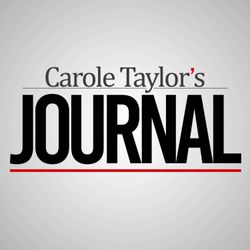Latest episode
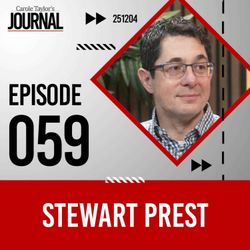
13. 59 | Turmoil on the Right in British Columbia Politics (w/ Stewart Prest, University of BC)
22:40||Season 3, Ep. 13On this edition of Journal: What has happened to the centre-right coalition that ran British Columbia for so many years, under various names (SoCreds, BC Liberals, etc.)?The latest iteration was cobbled together just before the last provincial election when John Rustad, who had been kicked off the BC Liberals before they became BC United, joined up with the dormant Conservative party – and then Kevin Falcon, the BC United leader, pulled his party out of the race.And we’re seeing the same kind of division on the right at the municipal level in Vancouver. Ahh, BC politics.And unbelievably, this party with virtually no money, no organization, and a lot of newbie candidates almost won the election. Such was the unhappiness with the NDP government and Premier Eby.Now, one might have thought that such a surprisingly good result would have given this new group hope and enthusiasm for the future. But no. Instead of all pulling together in the same direction with one eye on the future, the backstabbing and innuendo began.Whispers and more whispers: John Rustad, the man who brought them so close to victory would be gone by Monday, or next week, or next month.One year later, five MLAs have left or been kicked out of caucus and a majority of the Conservative Party executive have called for Rustad’s resignation, as have the presidents of five Metro Vancouver ridings. And yet, John Rustad is becoming more and more prominent on social media, talking about issues such as Cowichan, affordability and EV mandates.To help us understand the machinations of politics in this province is my guest this week, Dr. Stewart Prest, a lecturer in political science at the University of BC.
More episodes
View all episodes

12. 58 | Is British Columbia’s Healthcare on Life Support? (w/ Dr. Brian Day)
22:34||Season 3, Ep. 12On this edition of Journal: healthcare.How can we ever have a meaningful discussion on how to improve healthcare delivery in Canada when we aren’t even allowed to ask the question? Medicare is perfect – until it isn’t.Tangentially, this reminds me of the President Biden situation, when all his spokespeople were insisting that he was in perfect health until the public saw with their own eyes during the debate – that, in fact, something was very wrong.So what are we seeing with our own eyes about healthcare delivery?All seven OB-GYNY doctors – the entire unit – resigned their positions in the Kamloops hospital, citing unsafe working conditions and staff shortages.People in Kelowna were told in the spring that the entire pediatric team at Kelowna General Hospital was being closed down due to poor working conditions.Last year, British Columbia started sending some of our cancer patients to Bellingham, in the US, because we couldn’t guarantee timely treatment.And of course, our headlines are filled with ER closures around the province: Merritt, Mission, Delta, and on and on. I can’t imagine the family that showed up in the middle of the night with a sick child, only to find the ER closed, thinking our healthcare system is just fine.And I haven’t even mentioned waitlists and the shortage of family physicians.One man who has been warning of this impending crisis since 1995 is Dr. Brian Day. He has devoted years – 13 of them – in court fighting provincial and federal governments, trying to be heard.Brian has recently written a book: “My Fight for Canadian Healthcare.”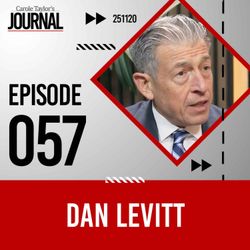
11. 57 | Seniors in Poverty (w/ Dan Levitt, British Columbia’s Senior’s Advocate)
22:32||Season 3, Ep. 11On this edition of Journal: the complexities and needs of our aging population.I’m a baby boomer and to this day, I am astounded that institutions never saw us coming. With at least five years’ warning before this population boom hit the school system, it seemed to be a surprise when we all arrived – not enough desks, not enough classes, not enough schools.But that bureaucratic “miss” is nothing compared to what we face today, as these same baby boomers age. Who knew?Who knew boomers would need more and more complex healthcare as they got older?Who knew that it would become harder and harder for some seniors to pay rising rents on a fixed income, leading to an increase in homelessness for those over 55?Who knew that, along with longer lifespans, there would be a commensurate demand for those not able to take care of themselves – a demand for long-term care beds and assisted living services?Well, here we are – and now we know.According to British Columbia’s Seniors Advocate, we need at least 5,000 new long term care beds, as the waitlist for seniors needing these beds has grown by 200% in the last ten years.And this shortage becomes a chokepoint for our entire healthcare system. Hospital beds are often occupied by someone ready to be released from acute care, but can’t until a long-term care bed is available. Then the E.R. gets backed up because a patient that should be admitted to a hospital bed has to stay in the hall of the emergency department because there isn’t an open bed upstairs.Sounding the alarm on this issue, as well as ageism, is Dan Levitt, our province’s Seniors Advocate.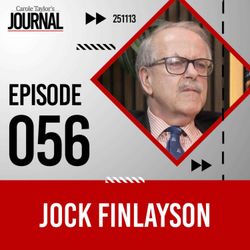
10. 56 | A Big Bold Brazen Budget Deficit (w/ Jock Finlayson, ICBA Chief Economist)
22:43||Season 3, Ep. 10On this edition of Journal: an in-depth look at the recent federal budget with one of Canada’s top economists, Jock Finlayson.You know, a lot has changed recently in how budget information is released. It used to be considered a major failure if anything was leaked before the minister stood up in Parliament and officially read the document into the record. This was to prevent insiders from using information for their own benefit.In 1983, Marc Lalonde found himself in hot water because he had let a television crew into his office while the yet-to-be-released budget lay on his desk.In 1989, Michael Wilson took responsibility when a leaked copy was handed to a reporter from a recycling plant. Michael didn’t resign but this was recognized to be a serious misstep.Not anymore. Now, prereleasing budget initiatives is regarded as performance art. In the weeks leading up to Budget Day in Parliament this year, minister after minister would discuss initiative after initiative that would be included. Housing? We’ve got something for that. Critical minerals? We’ve got that covered.Prime Minister Mark Carney even gave a speech promising the budget would be transformational, generational – whatever that means.So while politicos probably regarded all the early positive stories to be a successful manoeuvre, it kinda backfired when Budget Day headlines said: “Over promised, under delivered” or “Big day wasn’t quite as advertised” or “Carney’s budget misses the mark.”So what should we really be taking away from the government’s financial blueprint in 2025? Jock Finlayson has some warnings we should pay attention to.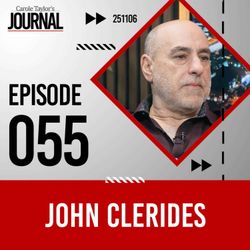
9. 55 | Disorder on Our Streets (w/ John Clerides, Marquis Wine)
22:33||Season 3, Ep. 9On this edition of Journal, we examine the issue of retail crime and street disorder, and how they are changing the cities we live in.Last year, Caren McSherry, owner of the Gourmet Warehouse on East Hastings, told her story of how retail crime and intimidation is making her reconsider her business after more than 20 years. Broken windows (that she has to pay for), open theft where three big guys come in and simply take 3 very expensive juicers from the shelves, drugs and disorder on the street, even staff intimidation by one man who came in wearing a garbage bag and stripped. Is it worth it?Another recent headline featured the owner of the Aura Nightclub on Granville Street, Allan Goodall, talking about how his business has been affected by the move to replace the Howard Johnson Hotel above him with supportive housing in 2020. Since that time, there have been more than 900 calls to the fire department and police say they have received thousands of calls. So, closed business for costly repairs – repeatedly – and intimidation of customers who really don’t feel safe coming into the area. How long can he keep going?So many small businesses have given up – just look at the boarded-up “For Lease” signs.John Clarides is the owner of Marquis Wine Cellars on Davie Street. Even though he is not in the direct hit of the Downtown Eastside, his business is also suffering from disorder on the street, vandalism, and shoplifting. His worry is that this is not just hurting his business; the long-term danger is that people are discouraged from coming downtown at all. He says, “When a street dies, a city dies.”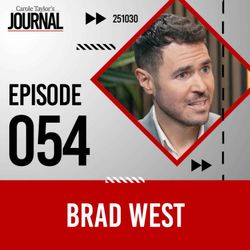
8. 54 | A Return to Common Sense (w/ Mayor Brad West, City of Port Coquitlam)
22:43||Season 3, Ep. 8On this edition of Journal, we look at what is happening in our economy. It is a tumultuous time, quite apart from tariffs. Housing prices, while falling, are still unaffordable for many. Real estate companies have been forced to lay off long time employees. Forestry companies are in big trouble. Youth unemployment hit 14.6% this summer – highest since 2010. And governments are announcing unbelievable deficits.As well, many citizens are turning against one of the principles of what it means to be Canadian: immigration.A Nanos poll showed an erosion of support, with 71% of Canadians either strongly or somewhat strongly wanting to reduce the number of immigrants. Most of the wrath is focused on the careless way in which the numbers of Temporary Foreign Workers and international student visas were allowed to balloon, putting pressure on housing, healthcare, education, and social services across the country.As mayor of Port Coquitlam, Brad West is no stranger to taking the brunt of policies designed by another level of government – the forced densification of British Columbia’s municipalities by the provincial government, which he calls “throwing urban planning out of the window.”Brad also laments the lack of real action on involuntary care, when we need at least one other forensic psychiatric hospital to care for those who are in desperate need of help. Then there is decriminalization that precipitated such disorder on our streets.So, it is not surprising that Brad West also has something to say about our economy and immigration. However, his analysis may surprise you.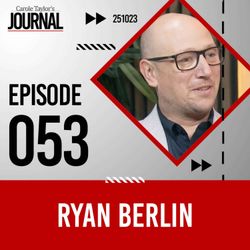
7. 53 | Is it a Buyer’s Market? (w/ Ryan Berlin, rennie Intelligence)
22:38||Season 3, Ep. 7On this edition of Journal, we try to find truth amidst all of the contradictory data and headlines on housing.Not long ago, there was one newspaper story lamenting the disastrous state of residential construction and another story (the very same day) saying things were looking up.And then, the confusing headline – “Housing starts are up but sales are down.” Huh? What does all this mean?One thing to know is that in the real estate business, “starts” are a lagging indicator – that means those “starts” are about the past, as contradictory as that sounds. Many of those projects were initiated several years before today and may have been years in the developing / permitting / financing process and are just now in construction – thus, the use of the term “starts.”On the other hand, sales tell you what is happening real time. How many actual properties successfully changed hands this quarter? How many built condos are sitting empty? One estimate says there are more than 2500 newly built, never lived-in condos available in Metro Vancouver – the highest number in this market in 25 years. rennie Intelligence calls this a “once-in-a-generation opportunity” for buyers.But does availability mean affordability?And why so many layoffs in the housing industry?Ryan Berlin is the senior economist and Director of rennie Intelligence and the man leading a team of housing experts analyzing the data and the public policies shaping our housing market.He has always been generous to me with his time, his analysis, and his predictions of where we are in the housing cycle and where we might be headed.
